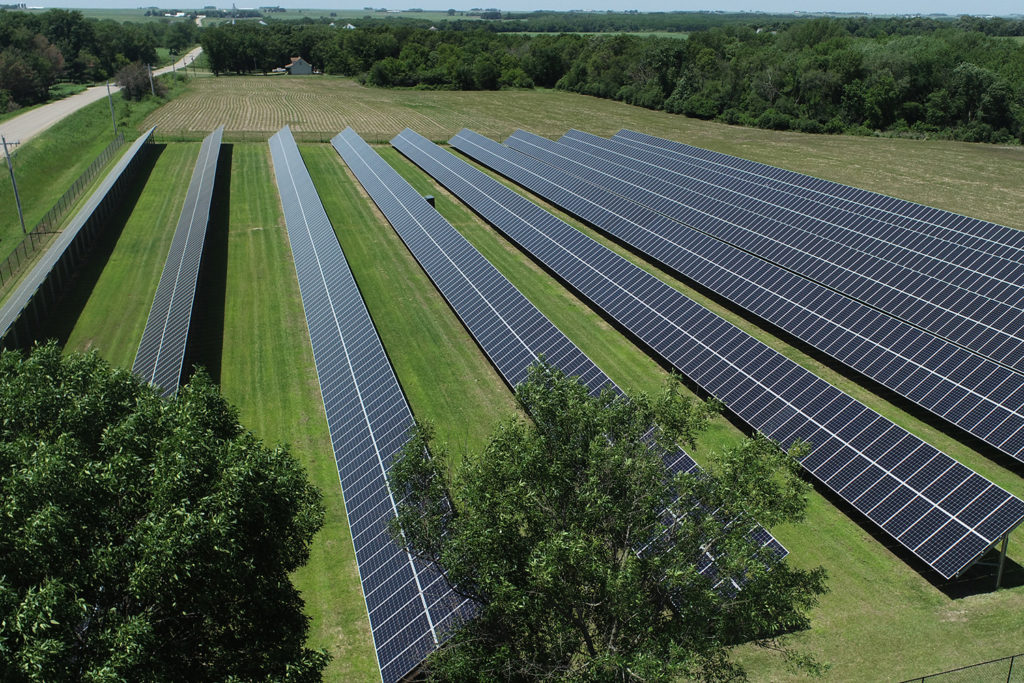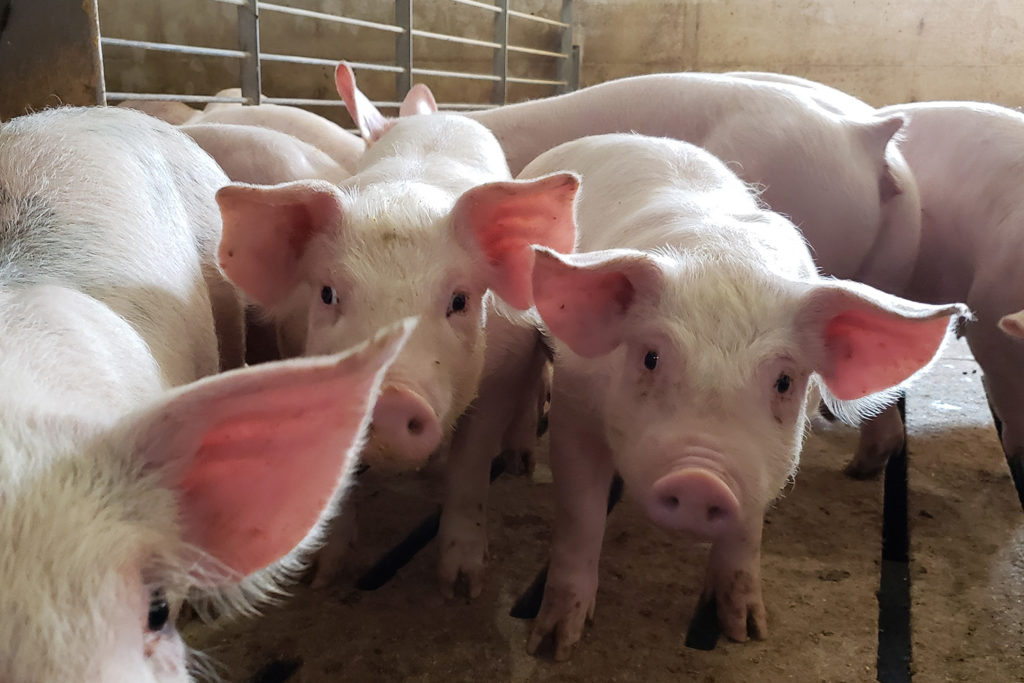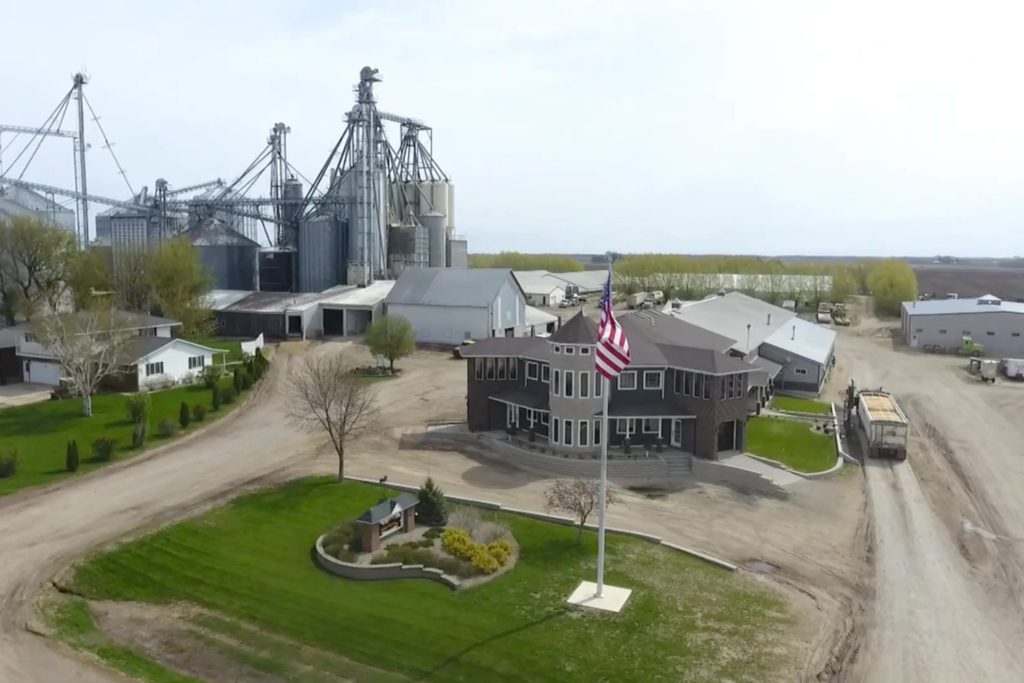
Keeping tens of thousands of hogs fat and happy takes a lot of electricity, but Reicks View Farms has found a way to reduce its monthly electric bill while improving the environment.
The Lawler, Iowa, hog farm, which has 50,000 breeding sows and ships 25,000 hogs to market each week, is now earning money from selling solar energy to MiEnergy Cooperative, an electric co-op based jointly in Cresco, Iowa, and Rushford, Minnesota.
The 664-kW Reicks View solar array has reduced the farm’s carbon footprint, cutting carbon dioxide emissions by 333 tons. And the renewable power generated by the farm benefits the hogs, according to farm operators.
“We’re constantly changing the environment to keep it comfortable for the pigs,” said Mark Kipp, the farm’s purchasing manager. “As it gets warmer, we’ve got to move a lot of fresh air through our buildings. That helps the pigs stay healthy and, when they’re healthy, they eat better and they gain more weight.”

When farm managers began exploring renewable energy, they considered biowaste generation and wind turbines. But the farm’s maintenance staff and electricians had experience with small solar applications, so utility-scale solar quickly won out.
The array of static solar panels, constructed on pastureland located near MiEnergy’s three-phase distribution feeder line, began producing electricity 10 months ago. Six sheep grazing at the site consume enough vegetation to help minimize upkeep.
“In this situation, it benefits both the member and the cooperative by building one large utility-scale system rather than several small ones,” said Brian Krambeer, MiEnergy’s president and CEO.
He credited the co-op’s power supplier, Dairyland Power Cooperative, with paving the way for the deal by allowing its distribution co-ops to add locally generated renewable energy to their portfolios.
“This arrangement has allowed us to add Reicks View Farms’ system, as well as add four future arrays totaling 9 MW situated in specific areas of our service territory where distribution lines make for efficient delivery of power locally,” Krambeer said.

Farm operators are studying the possibility of adding more renewable energy, including battery storage, to help control energy costs as part of future modernization efforts. Meanwhile, they continue to monitor the performance of the solar components.
“I was surprised to learn how much solar technology has improved in the last five years,” said Kipp. “I didn’t know what to expect going into this, but from what I know now, I think we’ll see even more solar energy as technology evolves.”
Derrill Holly is a staff writer at NRECA.